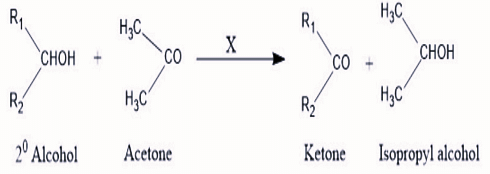Which of the following factor make carbonyl group in acyl compounds, too, susceptible to nucleophilic attack?
- The tendency of oxygen to acquire electrons even at the expense of gaining positive charge
- The tendency of oxygen to acquire electrons even at the expense of gaining negative charge
- The tendency of carbon to loose electrons even at the expense of gaining negative charge
- The tendency of carbon to loose electrons even at the expense of gaining positive charge
The Correct Option is B
Solution and Explanation
The susceptibility of the carbonyl group in acyl compounds to nucleophilic attack can be understood by analyzing the electronic nature of the functional groups involved. Let's break down the reasoning:
- The carbonyl group (\(\text{C} = \text{O}\)) consists of a carbon atom double-bonded to an oxygen atom. In this bond, oxygen is more electronegative than carbon.
- This difference in electronegativity causes the oxygen atom to pull electron density towards itself, making it highly electronegative.
- The statement that is true regarding the tendency of oxygen is: "The tendency of oxygen to acquire electrons even at the expense of gaining negative charge." This is the correct choice because:
- Oxygen's high electronegativity allows it to pull electrons from the carbon atom towards itself, leading to a partial negative charge on oxygen and a partial positive charge on carbon.
- This partial positive charge on the carbon makes it an electrophilic center, which is more susceptible to nucleophilic attack.
Therefore, the susceptibility of the carbonyl group to nucleophilic attacks is predominantly due to the oxygen's tendency to attract electrons and become negatively charged. This charge separation makes the carbon more electrophilic and capable of undergoing nucleophilic attacks.
Top Questions on carbonyl compounds
- Which of the following are neutral?
- KEAM - 2025
- Chemistry
- carbonyl compounds
- Acetone can be converted to 2-methylpropan-2-ol using:
- KEAM - 2025
- Chemistry
- carbonyl compounds
- The correct stability order of carbocations is
- JEE Main - 2024
- Chemistry
- carbonyl compounds
- According to Oppenauer Oxidation reaction, oxidation of secondary alcohol to ketone by reagent (X) in acetone takes place, what is "X" :

- GPAT - 2024
- Organic Chemistry
- carbonyl compounds
- The Gattermann-Koch reaction is used in the industrial preparation of benzaldehyde. The electrophile involved in this reaction is
- CUET (UG) - 2024
- Chemistry
- carbonyl compounds
Questions Asked in GPAT exam
- Which of the following alkaloids are found as salts of meconic acid?
- GPAT - 2025
- Introductory Pharmacognosy
Choose the correct match of laxative and its Mechanism of Action (MOA):

- GPAT - 2025
- Laxative
Match the following:
(P) Schedule H
(Q) Schedule G
(R) Schedule P
(S) Schedule F2
Descriptions:
(I) Life period of drugs
(II) Drugs used under RMP
(III) List of Prescription Drugs
(IV) Standards for surgical dressing
- GPAT - 2025
- Drug therapy
- Which of the following is used to evaluate disinfectant?
- GPAT - 2025
- Pathogens
Match the following:
(P) Tuberculosis (1) Bacterial
(Q) Diphtheria (2) Viral
(R) Yellow fever (3) Toxoids
(S) Malaria (4) Protozoal- GPAT - 2025
- Pathogens